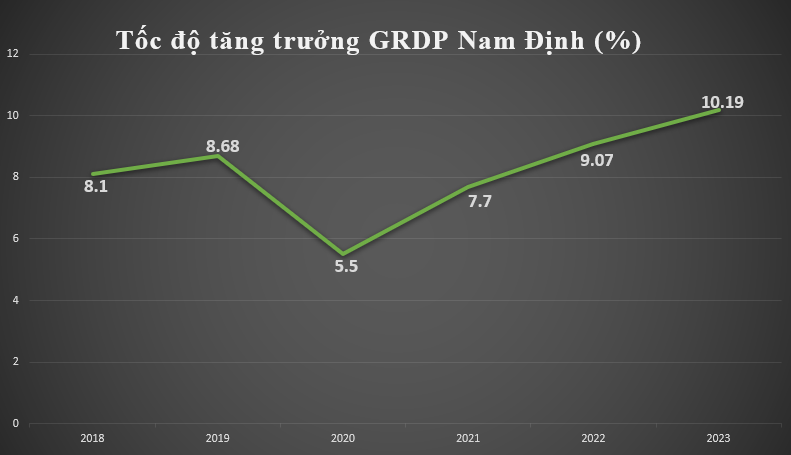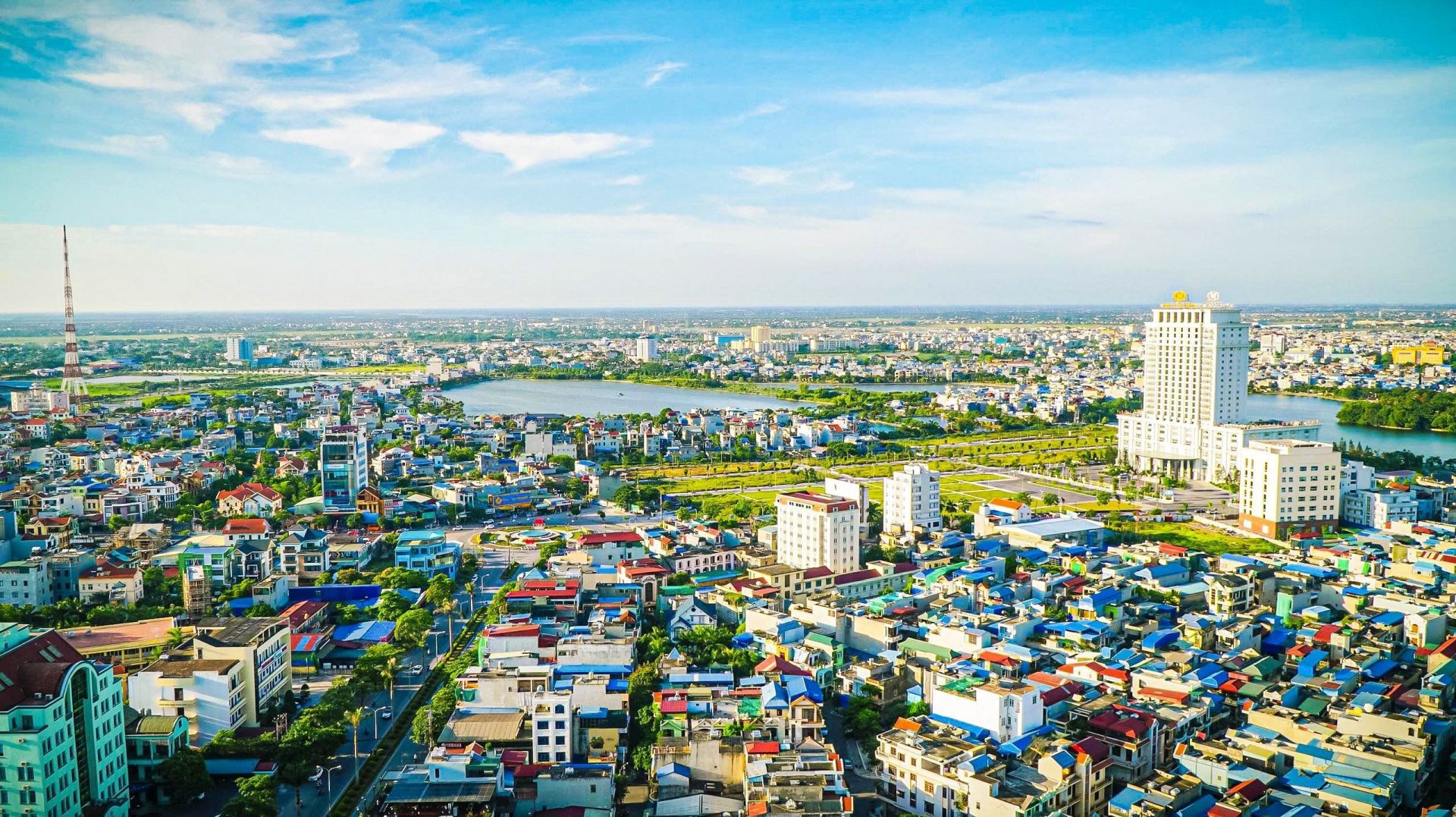In 2023, Nam Dinh’s Highest Growth Rate Ever
Nam Dinh is a province in the Red River Delta region. The province has a natural land area of 1,668 km2, bordering Thái Bình province, Ninh Binh province, Hà Nam province, and the sea (Gulf of Tonkin).
This is the center of the Nam Dinh Red River Delta region, located in the influence area of the Hanoi – Hai Phong – Quang Ninh growth triangle and the North Coastal Economic Belt.
In 2023, the province achieved a growth rate of 10.19%, the highest ever. The province ranked third in the Red River Delta region and sixth in the country in terms of GRDP growth. The per capita GRDP reached 54.9 million VND/person, an increase of 12.0%.
The economic and social infrastructure is being invested in comprehensively, modernly, especially transportation infrastructure; the investment environment is increasingly improved… Nam Dinh shines in the country’s new rural construction. Especially, the province’s education and training have continuously ranked first in terms of quality nationwide for nearly 3 decades.

Graphics: PL
According to the Planning of Nam Dinh province for the 2021 – 2030 period, the vision to 2050, by 2030, Nam Dinh is planned to be a relatively developed province nationwide and an important development center in the Nam Dinh Red River Delta region. The average economic growth rate for the 2021 – 2030 period is about 9.5% / year.
The province’s economic – social space is organized and developed according to the model of “3 dynamic regions, 4 growth poles, and 5 economic corridors” with the orientation of developing multiple sectors and fields, focusing on developing industry, services, coastal economy, and coastal areas …
The economic structure is positively shifting, by 2030, the agriculture – forestry – fishery sector accounts for about 12%; industry – construction accounts for about 50%; services account for about 38%.
By 2030, the average GRDP per capita will reach about 160-180 million VND. The export turnover in 2030 reaches over 7 billion USD. The state budget revenue from the local economy in 2030 reaches over 18,000 billion VND.
In the vision to 2050, Nam Dinh becomes a modern economic center, an important driving force for the Red River Delta region, with a synchronized and modern infrastructure system, connecting trade, goods, services, and culture in the region.
5 Focus Groups Tasks, Solutions
At the Conference announcing the Planning of Nam Dinh province for the 2021 – 2030 period, the vision to 2050 and Promoting Investment in Nam Dinh province in 2024, Deputy Prime Minister Trần Hồng Hà stated that to implement the above plan, Nam Dinh needs to focus on the 5 important groups of tasks and solutions.
Firstly, with a high-quality human resources and great potential for clean energy, Nam Dinh needs to choose green economic sectors and knowledge-based economy with high added value. That must be specified by green criteria for infrastructure, technology, investment efficiency, and readiness in green and digital transformation. In parallel with that, the province needs to focus on mobilizing resources from planning through the investment in developing the urban – industrial – service economic ecosystem to develop infrastructure.

Next, the province needs to focus on planning and building suitable plans to develop green urban areas, smart cities, organized logical space, harmonizing between urban and rural areas. This is an inevitable trend in the process of industrialization and modernization.
Thirdly, Nam Dinh needs to develop unique and new tourism products through resort and cultural tourism with events on culture, science, history, and cuisine.
In addition, Nam Dinh also needs to shift agricultural production towards developing large-scale agricultural economy; focus on comprehensive management, uniformity of resources, protecting the environment, conserving biodiversity, natural marine ecosystems; actively respond to climate change, rising sea levels; … effectively exploit and sustainably use marine resources; especially pay attention to protecting the Xuân Thủy National Park – the core area of the Red River Delta Biosphere Reserve in the Northern region, associated with the development of ecotourism.
Finally, further improve the quality of education – training, develop high-quality human resources to meet the province’s development requirements; need policies to attract young labor force trained to return to work in Nam Dinh.
According to the report at the Conference on evaluating the implementation of tasks in the first 2 months, deploying key tasks in March 2024 of Nam Dinh, many socio-economic indicators of the province have achieved positive achievements.
The index of industrial production increased by 11.23%; the total value of retail goods and services increased by 15.6%; the total value of exports increased by 28.2%; the state budget revenue on the territory increased by 35% compared to the same period …
The province has 197 out of 204 communes and towns reaching the new countryside (reaching 96.6%) and 32 out of 188 communes achieving the model new countryside (reaching 17%).
The economic – social infrastructure system, especially key transportation projects, continues to be invested and progress accelerated. Land clearance work is strengthened in leadership, direction. The province has organized conferences to meet citizens, dialogue with farming households in aquaculture in the Con Xanh area (Nghĩa Hưng) on land clearance work to serve the construction of projects of Xuân Thiện Group.




































